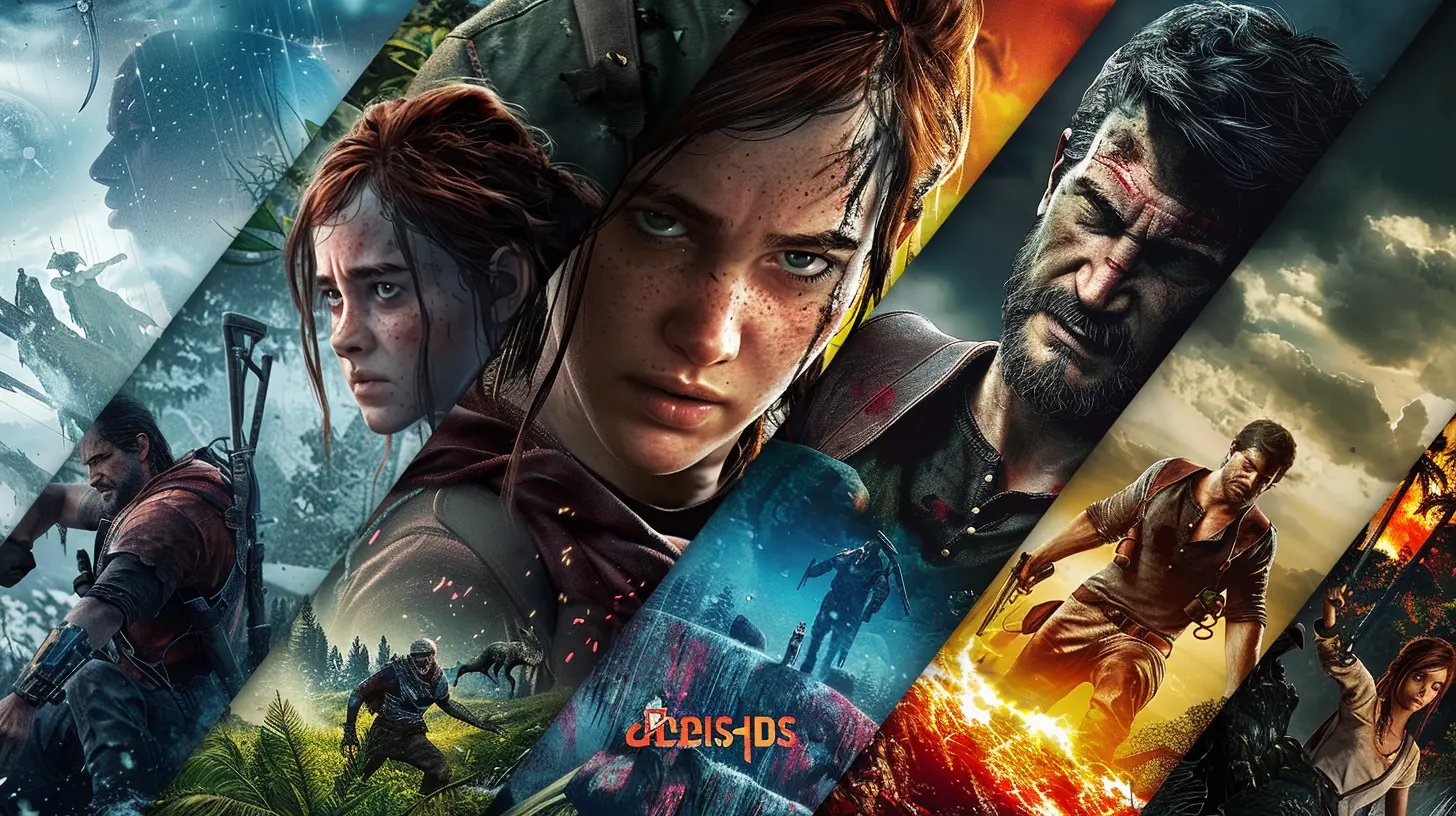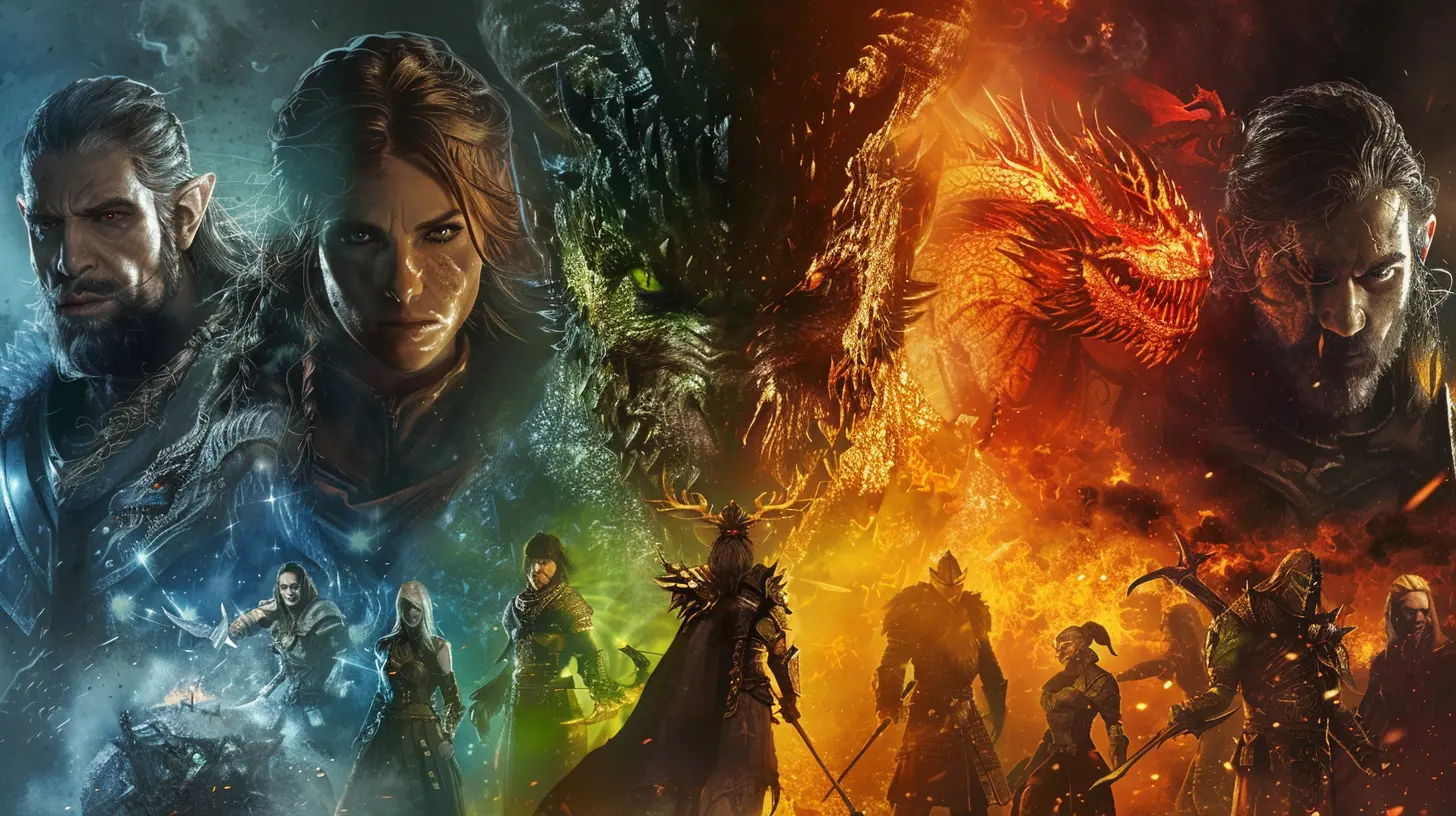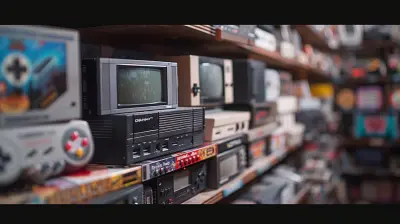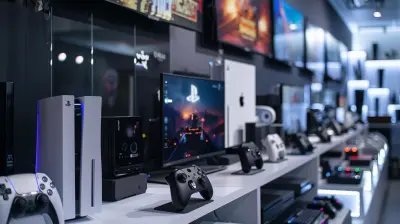The Evolution of DLC: From Expansion Packs to In-Game Stores
6 November 2025
Once upon a time, buying a video game meant getting everything in the package — no surprises, no extra costs. You’d pay once, get the disc, and dive right into the adventure. But oh, how things have changed. Welcome to the wild world of downloadable content, or as we all know it: DLC. From massive expansion packs of old to today’s in-game stores brimming with skins, boosts, and microtransactions, DLC has come a long, complicated way.
So, how did we get here? And more importantly, is all this extra content really making games better … or just more expensive? Let’s rewind the clock and take a deep dive into the fascinating evolution of DLC.
The Birth of Expansions: When Bigger Was Better
Let’s kick it off old-school. Back in the late '90s and early 2000s, DLC wasn’t even a thing. What we had were expansion packs. These were essentially sequels tucked into the same game universe — a pretty chunky bit of content, usually delivered on a shiny CD-ROM.Remember games like Diablo II: Lord of Destruction, The Sims: Hot Date, or Baldur’s Gate II: Throne of Bhaal? These expansions weren’t just cosmetic or bite-sized. They added real substance: new levels, characters, storylines — entire game mechanics sometimes.
The best part? They usually cost less than the base game but delivered hours of additional gameplay. You bought it once and owned it forever. No strings. No internet required. Just you, the game, and a bottomless bag of snacks.
Enter the Digital Era: DLC Goes Online
As internet speeds picked up steam (remember the days of dial-up struggles?), game developers spotted a golden opportunity. Why not deliver additional content directly to players, anytime, without making them buy a new disc?Boom. DLC as we know it was born.
Games like The Elder Scrolls IV: Oblivion (ah yes, the infamous “horse armor” DLC), Call of Duty 4: Modern Warfare, and Mass Effect started offering downloadable content. At first, it was mostly story add-ons or multiplayer maps. Pretty harmless, right?
But over time, the growing popularity — and profitability — of DLC started to shape game development itself. Some studios even began holding back content to sell later. It became easy money. And the lines between a complete game and “the rest of the game” started to blur.
The Rise of the Episodic Game Model: A Netflix-Style Twist
Somewhere along the road, a few developers thought, “What if we released games like TV shows?” And thus began the age of episodic content. Telltale Games ran with this, delivering hits like The Walking Dead and Tales from the Borderlands in a season-by-season fashion.This style made a lot of sense for narrative-driven games. It built suspense and kept players coming back for more. But it also nudged players into purchasing “Season Passes,” which, if we're honest, often felt like paying for a promise.
Not all episodic models were rip-offs, though. Some genuinely respected the players' time and money. But we’ll get to the dark side of DLC soon enough …
Microtransactions and Cosmetic Overload: The Look-Good Economy
As the free-to-play model took over mobile games, a new monetization monster was unleashed — microtransactions. Small payments for small perks. A new skin here, a power-up there. At first, it felt harmless. A buck or two? No big deal.But this trend eventually slithered its way into full-priced AAA games, and that’s where things got… complicated.
You’ll find this in games like Fortnite, Call of Duty: Warzone, Overwatch, and basically every modern multiplayer title. The focus isn’t just on gameplay anymore — it’s about looking good while doing it. Cosmetics became king. Skins, emotes, sprays, voice lines — some gamers spend more on virtual outfits than on their real-world wardrobe.
And this gave birth to the in-game store.
In-Game Stores: The New Frontier (or Final Straw?)
Today, nearly every high-profile title has an in-game store. Log in, browse new bundles, swipe your credit card — bingo, your character’s now rocking that $20 skin. These stores are open 24/7, packed with timed offers and battle passes designed to lure you in.Publishers have gotten clever with psychological tricks — FOMO (fear of missing out), loot boxes, and tiered passes. It’s all built to encourage spending. And while some players love the customization options, others feel nickel-and-dimed to death.
Here’s the kicker: many of these games already cost $60 or more. So why are we paying extra just to unlock stuff that probably could’ve been in the base game?
The Concept of Day-One DLC: The Ultimate Controversy
Imagine pre-ordering a new game, setting aside an entire weekend, and booting it up on release day — only to find that there's already DLC… available to buy. Yep, that’s been a thing for a while now: day-one DLC.This practice basically means holding content back and charging players for it immediately when the game launches. Fans hate it. Developers defend it. But the truth? It’s a textbook example of bad optics.
It’s not always as sinister as it seems — sometimes the DLC was developed after the game went gold. But from a player’s perspective, it feels shady as hell. You pay full price and still get gated off from content? That’s a hard sell.
Seasonal Content and Battle Passes: The New Status Quo
In the last few years, the industry has seen a shift towards recurring seasonal content. Games like Destiny 2, Fortnite, Apex Legends, and Call of Duty thrive on these models. Every few months, there’s a new season — new maps, new modes, new skins, new reasons to spend.Enter the Battle Pass.
Instead of random loot boxes, battle passes offer tiered rewards you unlock by playing — or by paying to skip levels (because of course). It’s a clever mix of progression and monetization. You feel like you’re working toward something… but if the grind is too intense, you're subtly encouraged to drop some cash.
It’s manipulative? Maybe. But it's wildly effective. Developers earn steady income; players get a sense of progression. Win-win? You tell me.
Community Mods vs. Paid DLC: Who Really Owns the Game?
Here’s a spicy thought — back in the day, mods were a big part of gaming culture. Players would create new levels, characters, even entirely new games using the tools developers provided. It was free. It was fun. It was a community effort.But now, with paid DLC and strict in-game economies, mods are often discouraged or flat-out blocked.
It raises an important question: who really owns the game once it's released? Should we be able to tweak, modify, and share content, or are we just renting the experience developers give us?
When content is locked behind paywalls, and customization is doled out in $5 bundles, it kind of gums up the creative sharing that once defined gaming communities.
The Good, The Bad, and the Profitable
Let’s call it like it is: DLC isn’t all bad.Games like The Witcher 3: Blood and Wine, Red Dead Redemption: Undead Nightmare, and Cyberpunk 2077: Phantom Liberty showed us that DLC can still be meaningful, chunky, and worth every penny. These expansions deliver hours of fresh content, polish existing systems, and respect the player’s wallet.
But on the flip side, we’ve also seen exploitative, barebones cash grabs that ask for your money while giving very little in return.
It really comes down to intent. Is the developer using DLC to enhance the experience — or to squeeze every last dime from an already paying customer?
So...Where Do We Go From Here?
Gaming’s not what it used to be, that’s for sure. But is that necessarily a bad thing?DLC — in all its forms — has become an unavoidable part of modern games. Some of it’s awesome, some of it’s sketchy, and a whole bunch of it falls somewhere in between. The key is transparency and value. We’re happy to support devs, but we also want to feel like we’re getting our money’s worth.
Maybe the future lies in a middle ground — offering cosmetic-only microtransactions while keeping real content locked to expansions that deliver substance. Or maybe, just maybe, subscription models will take over entirely and DLC will become part of a monthly package.
Only time will tell.
For now? Keep your wallet close, always read the fine print, and ask yourself one simple question before hitting that “Buy Now” button: “Is it really worth it?”
Final Thoughts: DLC Isn’t Evil — Just Evolved
Look, DLC doesn’t have to be the villain of the story. When done right, it breathes new life into old favorites and supports hardworking developers. But when abused, it turns games into pay-to-win nightmares or never-ending spending traps.As players, we should demand better — not just better content, but better ethics. Because at the end of the day, we’re not just buying games. We’re buying experiences. And those should always be worth the price.
all images in this post were generated using AI tools
Category:
In Game PurchasesAuthor:

Lana Johnson
Discussion
rate this article
1 comments
Tilly Wilkins
What a fascinating journey through gaming history! It's amazing to see how DLC has transformed from expansions to in-game stores, enriching our gaming experiences!
November 11, 2025 at 5:28 AM

Lana Johnson
Thank you! I'm glad you found the journey insightful—DLC has indeed reshaped how we engage with games over time!


